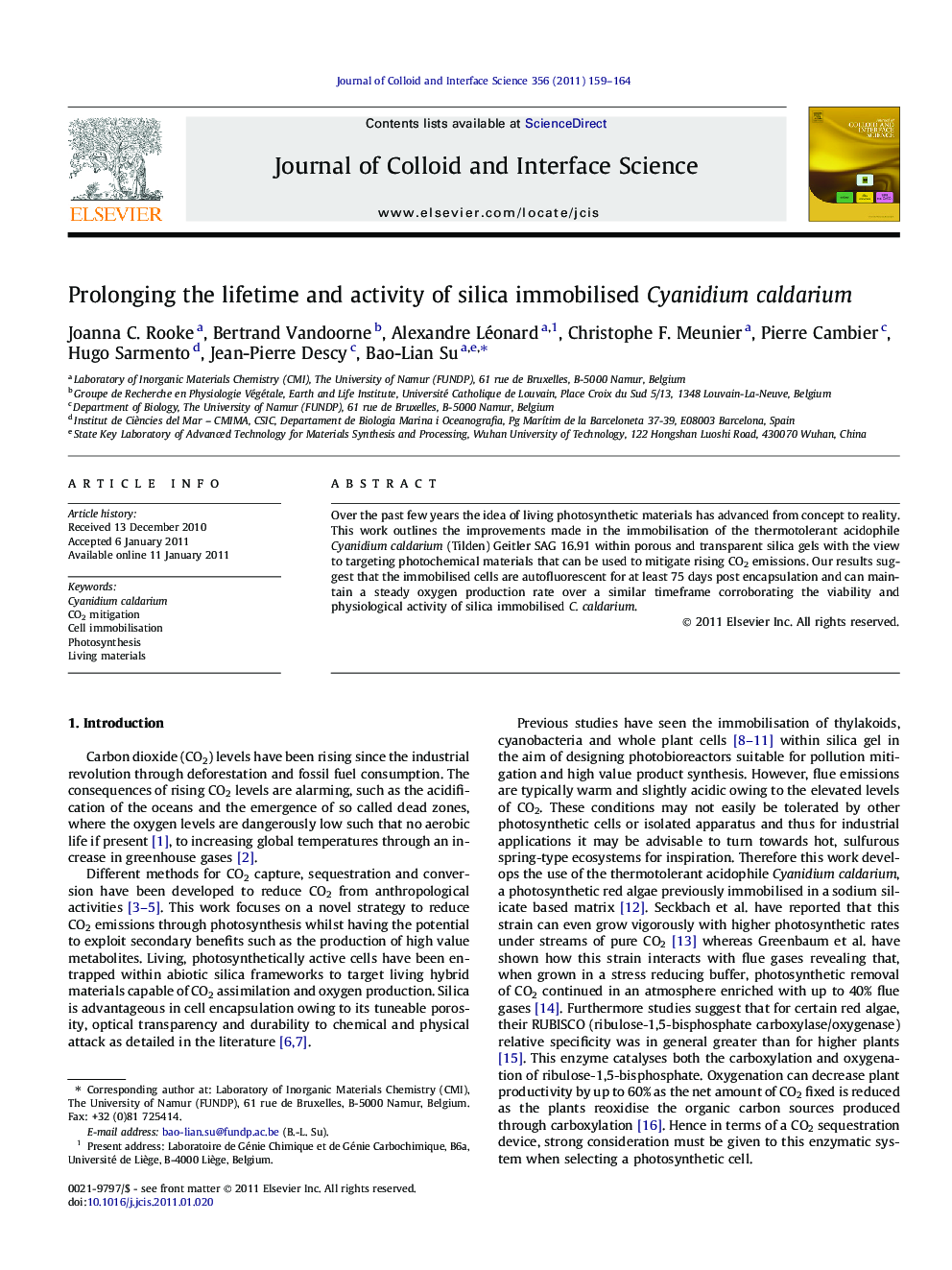| Article ID | Journal | Published Year | Pages | File Type |
|---|---|---|---|---|
| 608717 | Journal of Colloid and Interface Science | 2011 | 6 Pages |
Over the past few years the idea of living photosynthetic materials has advanced from concept to reality. This work outlines the improvements made in the immobilisation of the thermotolerant acidophile Cyanidium caldarium (Tilden) Geitler SAG 16.91 within porous and transparent silica gels with the view to targeting photochemical materials that can be used to mitigate rising CO2 emissions. Our results suggest that the immobilised cells are autofluorescent for at least 75 days post encapsulation and can maintain a steady oxygen production rate over a similar timeframe corroborating the viability and physiological activity of silica immobilised C. caldarium.
Graphical abstractThe photosynthetic activity of an acidophilic thermotolerant algal cell, Cyanidium caldarium, has been preserved within silica gel, yielding living hybrid materials capable of CO2 bioconversion to carbohydrates.Figure optionsDownload full-size imageDownload high-quality image (162 K)Download as PowerPoint slideResearch highlights► Preservation of living cells within sol–gel derived silica monoliths. ► Carbon dioxide assimilation from living hybrid materials. ► Photosynthetic oxygen production detected over 75 days post immobilisation. ► Autofluorescence from chlorophyll a detected after 75 days post immobilisation.
